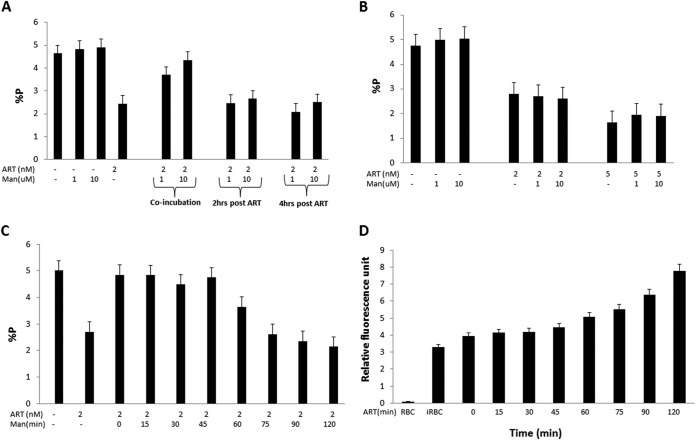FIG 3.
Time kinetics of the antimalarial effect of ART and role of ROS. (A) Mannitol, a scavenger of ROS, was used to probe the early kinetics of the antimalarial effect of ART. Parasites were treated with ART (2 nM) and mannitol (1 and 10 μM), added at either time zero or 2 and 4 h after treatment with ART. Percent parasitemia was determined at the 48-h time point. The error bars represent standard errors of the means. (B) Mechanisms leading to the ART-mediated antiparasite effect manifest during the first 2 h. Parasites were treated with increasing concentrations of ART (0, 2, and 5 nM) for 2 h, washed to remove extracellular ART, and then returned to culture with increasing concentrations of mannitol (0, 1, and 10 μM) for 48 h, and parasitemia was measured. The error bars represent standard errors of the means. (C) A minimum of 45 min is needed before mannitol gradually becomes ineffective in scavenging ROS during the ART-mediated antiparasite effect. Parasites were treated with 2 nM ART for 15 to 120 min, washed to remove extracellular ART, and then returned to culture with 10 μM mannitol for 48 h to assess parasitemia. The error bars represent standard errors of the means. (D) ART-induced ROS levels steadily increase with time. Parasites were treated with 2 nM ART, and the relative fluorescence intensity was measured every 15 min. The error bars represent standard errors of the means.

